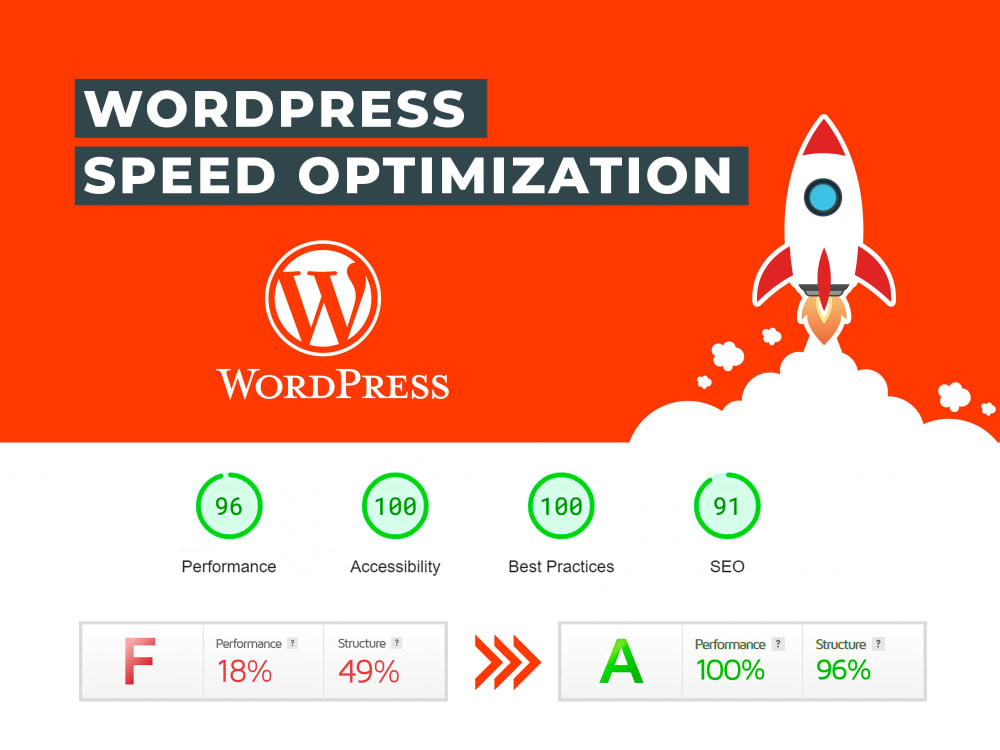10 Essential Tips for Building a Fast and SEO-Friendly WordPress Website
In today's competitive online landscape, having a fast and SEO-friendly website is crucial for success. Search engines like Google prioritize websites that load quickly and are optimized for user experience, while visitors expect fast-loading pages and smooth navigation. If you're running a WordPress website, there are several techniques you can use to improve both speed and SEO. Here are ten essential tips to help you build a fast and SEO-friendly WordPress site.
1. Choose a Lightweight Theme
The theme you choose has a significant impact on your website's performance. Lightweight themes like Astra, GeneratePress, or Neve are optimized for speed and performance. Avoid bloated themes that come with a lot of unnecessary features and scripts, as they can slow down your site. Opt for themes that are minimalistic, cleanly coded, and responsive.
2. Optimize Images
Images are one of the biggest contributors to slow-loading websites. By optimizing your images, you can significantly reduce your site's load time. Use tools like TinyPNG or ShortPixel to compress images without compromising quality. Additionally, make sure to serve images in modern formats like WebP, which offer better compression than traditional formats like JPEG or PNG.
Another important aspect is lazy loading, a technique that loads images only when the user scrolls down the page. This reduces initial page load time and improves user experience.
3. Use a Content Delivery Network (CDN)
A CDN stores copies of your website's static files, such as images, CSS, and JavaScript, in multiple data centers around the world. When a user visits your website, the CDN delivers the content from the server closest to their location, reducing latency and speeding up load times. Popular CDNs include Cloudflare, StackPath, and BunnyCDN.
Using a CDN also improves your website's security by protecting it from Distributed Denial of Service (DDoS) attacks and reducing server load.
4. Install a Caching Plugin
Caching is one of the most effective ways to improve WordPress site speed. When caching is enabled, your site stores a static version of your pages, reducing the need for repeated database queries. This drastically cuts down on page load time.
Popular caching plugins like W3 Total Cache or WP Super Cache can significantly improve performance by delivering static files to visitors. These plugins also come with options to minify CSS, HTML, and JavaScript files, further improving performance.
5. Minimize Plugins
While WordPress plugins offer great functionality, too many can slow down your site. Each plugin you install adds extra load to your server and can create conflicts or inefficiencies. Audit your plugins regularly and deactivate or delete any that are unnecessary. Opt for well-coded, lightweight plugins and avoid those that perform multiple functions you don’t need.
Additionally, consider consolidating plugin functionalities. For instance, a plugin like Jetpack offers multiple features in one, which can reduce the need for multiple single-function plugins.
6. Optimize Your Database
Over time, your WordPress database accumulates unnecessary data such as post revisions, spam comments, and transient options. This bloated data can slow down your site’s performance. Regularly cleaning up your database can improve speed and performance.
You can use a plugin like WP-Optimize to automatically clean and optimize your database. It removes redundant data, optimizes database tables, and keeps your database lean and efficient.
7. Enable GZIP Compression
GZIP compression reduces the size of your website files, making them faster to load. This technique compresses your site’s CSS, HTML, and JavaScript files before sending them to users' browsers, reducing bandwidth usage and speeding up the website.
Most caching plugins, like W3 Total Cache, come with a built-in option to enable GZIP compression. You can also enable GZIP manually by adding a few lines of code to your .htaccess file.
8. Use SEO-Friendly URLs
SEO-friendly URLs are easy to read and include relevant keywords, helping search engines understand the content of your pages. By default, WordPress generates URLs with numbers and symbols, but you can customize them to improve SEO.
Go to Settings > Permalinks and choose the “Post name” option. This will structure your URLs in a clean and descriptive manner, such as example.com/blog/seo-tips, which is more SEO-friendly than example.com/?p=123.
9. Optimize for Mobile Devices
With the increasing use of mobile devices, having a mobile-friendly website is essential for both SEO and user experience. Google now uses mobile-first indexing, meaning that the mobile version of your site is prioritized in search rankings.
Choose a responsive WordPress theme, or use plugins like WPtouch to make your site mobile-friendly. Test your site’s mobile performance using Google’s Mobile-Friendly Test tool, and ensure that all content is easily accessible on smaller screens.
10. Utilize Schema Markup
Schema markup helps search engines better understand your content and provides rich snippets in search results. For example, a recipe page could display cooking time, ingredients, and reviews directly in the search results.
You can use plugins like Schema Pro or Yoast SEO to easily add schema markup to your WordPress site. Implementing structured data enhances SEO and improves your website’s visibility in search engine result pages (SERPs).
Conclusion
Building a fast and SEO-friendly WordPress website is essential for providing a good user experience and improving your search engine rankings. By choosing the right theme, optimizing your images, using a CDN, and following the other tips mentioned above, you can significantly enhance your site’s performance. Remember that speed and SEO go hand-in-hand, so investing time in both will help you stay competitive in the online marketplace.
By implementing these best practices, your WordPress site will load faster, rank higher, and deliver a better overall experience for your visitors.





